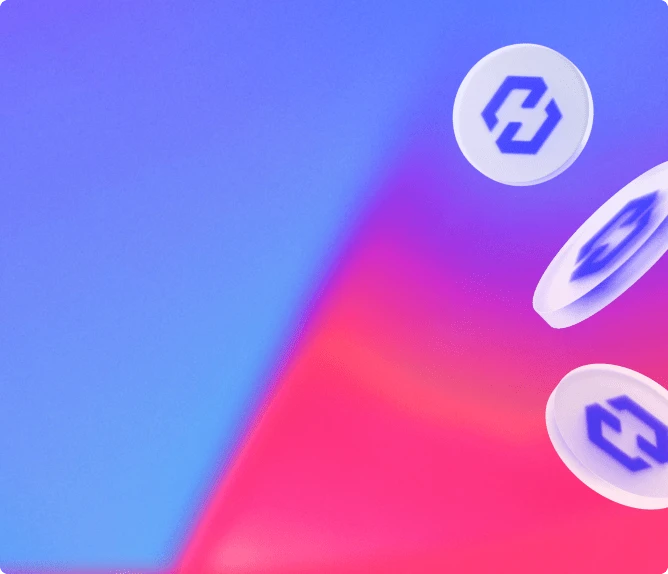Investing in crypto-assets carries risks of liquidity, volatility, and partial or total capital loss. Crypto-assets held are not covered by deposit and securities guarantee mechanisms.


Sign up for our newsletter
Partners
Coinhouse
Our accounts
Coinhouse
Coinhouse SAS with a capital of €210,000, RCS Paris 815 254 545, headquarters: 14 Avenue de l'Opéra 75001 Paris – support@coinhouse.com. Registered with the AMF for activities related to the purchase/sale of digital assets against legal tender, the exchange of digital assets for other digital assets, and the custody of digital assets for third parties under the registration number: E2020-001.
Coinhouse payment solutions
Company registered with the Paris RCS under the number 914 384 557, registered with the Prudential Control and Resolution Authority as a payment service agent under the number 727503 of the electronic money institution Treezor, headquartered at 33 Avenue de Wagram, 75017 Paris.
General conditions, disclaimers and legal documents.



Enjin Coin is a cryptocurrency created in 2017.
There are countless cryptocurrencies now available on the market.
Yet Enjin Coin manages to stand out.
This undoubtedly has to do with the community of gamers and game developers enthusiastic about the project. Enjin Coin is, in fact, a crypto project based primarily on the video game sector.
It could, in time, become the most popular virtual currency for the exchange of video games or any other digital object.
The beginnings ofEnjin crypto date back to 2009, but it was officially created in 2017 by the Enjin company.
The Enjin platform, if it still needs any introduction, is a veritable ecosystem promoting asset creation, but also distribution, storage and trading.
Discover the benefits of buying Enjin Coin (ENJ) tokens on the Coinhouse platform.
In addition to the simplicity and security of transactions, Coinhouse offers quick and easy access to ENJ, enabling you to participate actively in the Enjin ecosystem.
Take advantage of the diversity of payment options and the reliability of an AMF-registered platform.
Don’t miss the opportunity to join the Enjin revolution and invest in the future of gaming and NFT with Coinhouse.
The history of Enjin Coin goes back to 2009. Enjin co-founders Maxim Blagov and Witek Radomski joined forces to create the platform.
It quickly gained momentum, attracting 20 million users worldwide after just a few years.
Blagov and Radomski witnessed the rise of cryptocurrencies and quickly saw the potential of these new virtual currencies.
By 2017, cryptos and ICOs had become unavoidable.
Enjin decided to focus on this promising sector.
Behind the idea of creating Enjin Blockchain, there is an even stronger ambition.
Blagov and Radomski want to bring together the worlds of video games and blockchain to develop new, unprecedented ecosystems.
This could enable virtual worlds to have real economic representation, with in-game objects that can be easily exchanged or shared from one universe to another.
They’re not the first to imagine this possibility, but they’ve decided to put it into practice with ENJ.
It’s one of the most innovative crypto projects around.
The video game industry was immediately enthusiastic about it, and that hasn’t changed since.
In 2017, Enjin launched an ICO.
It was a resounding success: the founders managed to raise $18.9 million.
The ERC-20 token, Enjin Coin (ENJ), officially sees the light of day in 2018.
Blagov and Radomski were then able to embark on a long series of innovations linked to virtual worlds.
In the process, they developed the Enjin platform, designed entirely for the video game industry.
Thanks to this platform, games can create their own fungible or non-fungible tokens.
Enjin was one of the first projects to exploit the Raiden Network.
This is an Ethereum version of the Lightnining work.
ENJ then moved on to Efinity.
In 2020, Enji launched the Enjin Adopter program.
On this occasion, it succeeded in bringing on board more than 30 application and game developers.
The aim was to assist them in building, financing, monetizing and then selling their blockchain games.
Today, the team behind Enjin is still made up of its two founders, Maxim Blagov, now CEO, and Wiket Radomski.
Pat Labine is vice-president and team manager.
Enjin has also developed parallel partnerships with key players.
These include Samsung, Unity and PC gamer, all of which are references in the video game sector.
We could also mention BMW: users of the BMW Vantage application can convert their reward points into ENJ Coin.
Enji Coin has a total reserve of 1 billion tokens.
More than 800 million are already in circulation.
See ENJ price with Coinhouse.
As mentioned above, ENJ is an ERC-20 token built on the Ethereum blockchain.
This enables it to provide transactions and smart contracts.
Enjin offers numerous functionalities through its public API, including the creation and management of virtual assets.
It also has several DSKs: ENJ offers software development kits, for Unity in particular.
Developers can thus easily integrate their existing or new projects.
We can also mention Enjin Beam, a system enabling developers to send NFTs via a QR code scan.
While Enjin is an exciting project, it does have its limitations.
For a start, ENJ is not a currency.
On the contrary, game developers are strongly encouraged to use Enjin’s services to develop their own currency.
Having a common currency for many games makes no economic sense, as the scale and scenario of each game differs. Millions of units of currency are very little in a 4X game like Civilization VI, where the player is invited to take control of a nation, whereas it’s a fortune for any game that takes place at the level of an individual.
As games have different levels of difficulty depending on the target audience, having a common currency would give the opportunity to get rich in a simpler game to get rich in a more hardcore gamer game.
Nor is ENJ a convincing asset.
Its rarity is relative: the only use of ENJ that we have been able to identify is as an optional feature. optional to incorporate ENJ corners into created items in order to “ensure their intrinsic value over time”.
This possibility is left to the discretion of the game’s creators.
Nearly 9 million ENJ tokens are currently incorporated into various virtual objects (items).
On its marketplace, Enjin has over 10 million digital items available to users.
But this is perfectly reversible: at any time, the owner of an item can choose to “withdraw” these ENJ tokens and decide to sell them on the marketplace.
Another more important point is the prohibitive cost of generating tokens linked to Items: the game’s creator will have to pay a $20 service fee for each item generated.
While this may seem a reasonable sum at first glance, it should be borne in mind that a standard game represents tens, even thousands, of items for RPG.
We assume that if someone has the necessary skills to create and develop a video game, taking inspiration from Enjin and then self-publishing 721 token smart-contracts in an open-source ecosystem is easily feasible.
A major weakness for long-term use of the platform.
What’s more, the very idea of “locking in” a highly volatile asset like ENJ in a video game item to ensure its long-term value seems to us to be less than optimal. If this choice were to be made, a Stablecoin or a tried-and-tested cryptoasset such as Bitcoin seems better suited, with WBTC for example: representation of bitcoin in an Ethereum token.
Another thing to remember about Enjin Coin is that it cannot be mined.
The ENJ token is an ERC-20 native to the Ethereum blockchain.
As the illustrated extract from their 2017 Whitepaper shows, there’s no doubt that the Enjin team sincerely wanted to develop on Ethereum.
However and pragmatically, noting that scalability solutions on the Ethereum main network are lagging behind and that the network in its current state does not allow Enjin’s ambitions to be hosted in the short term, the teams have been looking at alternative solutions since 2018.
While the definitive solution has not yet been adopted, the consensus seems to be forming on a sidechain-type solution that will use the Ethereum main network to anchor the bare minimum of states required for proper security.
This is the type of solution favored by the majority of players in the ecosystem, as it minimizes transaction costs, enables a greater number of interactions and frees some from the constraint of having to own ETH to pay transaction fees.
With this in mind, Enjin has already created its own Block Explorer: EnjinX, a simple replica of products such as Etherscan.io that can be easily modified to observe a blockchain parallel to Ethereum.
Enjin Coin (ENJ) is a cryptocurrency focused on the integration of NFTs and digital assets into video games and applications.
It stands out for its ability to enable developers to create, manage and exchange digital assets in a secure, decentralized way.
Thanks to its strategic partnerships and projects such as Efinity and JumpNet, Enjin Coin is positioning itself as a key player in the adoption of NFTs.
However, as with any crypto, ENJ is subject to market volatility and increasing competition in the NFT sector, representing both opportunities and risks for investors.
Share the article


Download app